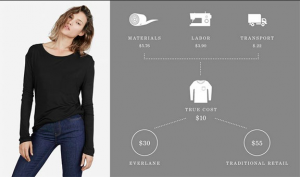The 2 Most Important Direct-to-Consumer Tips
By Anya Ferring

Image courtesy of Everlane.com
The dawn of the information age has shaken up many industries, but in fashion it is most clearly seen with the advent of direct-to-consumer shopping. Direct-to-consumer shopping is the business model that more and more fashion brands are opting for to offer quality products without price tags that break the bank. By eliminating the middleman, direct-to-consumer brands have no need for an additional wholesale cost mark-up, allowing them to sell their products at competitive pricing without having to sacrifice on fabric or design quality. Often this allows for many brands to produce locally as well, something becoming more and more important to consumers everywhere. In addition, having an online presence also allows brands to build a closer, more meaningful relationship with their customer.
With your own online store you have the opportunity to communicate one-on-one and get a real sense of what your customer wants from your brand, but you have to make sure you are holding their attention online first. What are two of the most important things to consider?
1.) Usability: There are a lot of options for DIY websites that offer an e-commerce platform like Shopify or Squarespace. Even though the template options may seem endless, the important thing is that you choose one that is functional in terms of having a user friendly, easy-to-navigate website. If your visitors can’t find your Shop link or get lost in an online labyrinth trying to figure out how to contact you, they are unlikely to want to purchase any items from your website.
2.) Product Descriptions: Also more important than ever is that your product is displayed and described accurately and clearly. Professional, clear, alluring photos are what will catch your customers’ eye. Detailed descriptions of the product, including care instructions, measurements, and materials content are key to helping your customer visualize and imagine the look and feel of the garment. Remember, this is your substitute for having your customer touch and try on the garment in person, so you want to provide as much information as possible.